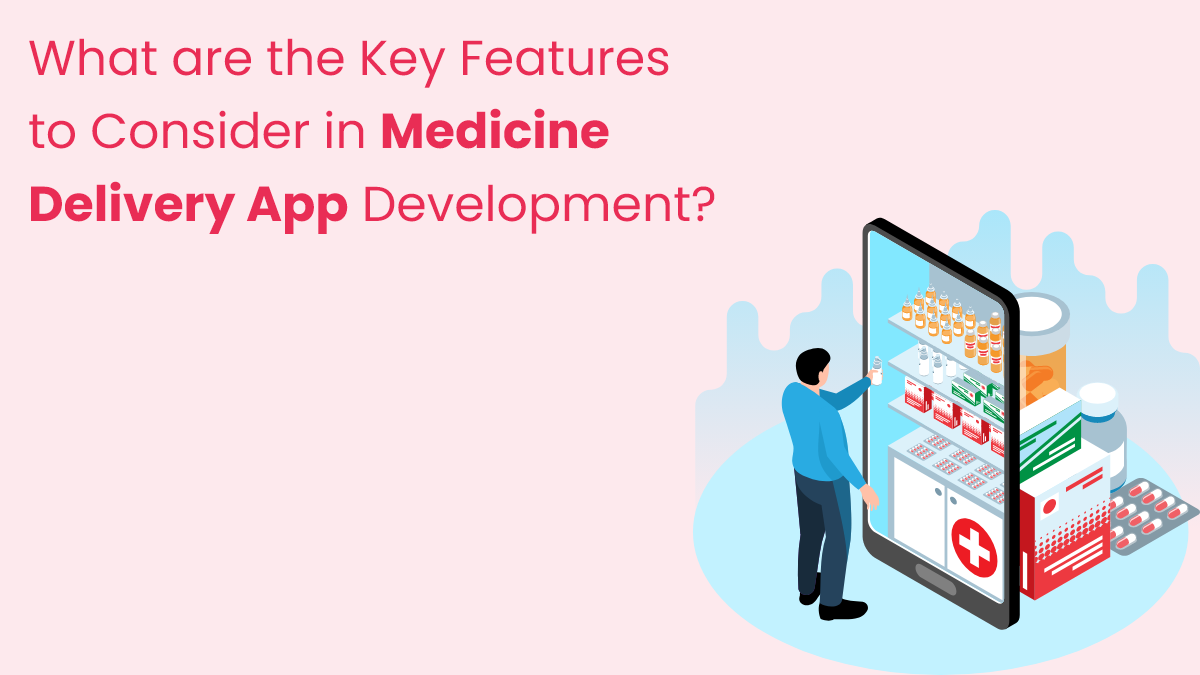In today's fast-paced world, convenience is paramount, especially when it comes to healthcare services. Medicine delivery app have emerged as a convenient solution for individuals to order prescription medications and have them delivered directly to their doorstep. However, developing a successful medicine delivery app requires careful consideration of key features to ensure a seamless user experience and efficient service delivery. Let's explore the essential features that developers should consider when embarking on medicine delivery app development.
User Authentication and Profile Creation
Implement secure user authentication methods such as email verification, phone number verification, or social media login to ensure the privacy and security of user accounts.
Allow users to create profiles where they can store personal information, medication history, and delivery preferences for a personalized experience.
Medication Search and Catalogue
Provide a comprehensive catalogue of medications, including both prescription and over-the-counter drugs, categorized by type, brand, and dosage.
Incorporate advanced search functionalities such as filters and sorting options to help users quickly find the medications they need.
Prescription Upload and Verification
Allow users to upload prescriptions directly from their device's camera or gallery.
Implement a verification process to ensure the authenticity of prescriptions and compliance with healthcare regulations.
Dosage Reminders and Medication Alerts
Enable users to set dosage reminders and medication alerts to ensure they never miss a dose.
Send push notifications or SMS reminders at scheduled times to prompt users to take their medication on time.
Secure Payment Gateway
Integrate a secure payment gateway that supports multiple payment methods such as credit/debit cards, mobile wallets, and net banking.
Encrypt all payment transactions to protect sensitive financial information and prevent unauthorized access.
Delivery Tracking and Notifications
Provide real-time delivery tracking functionality that allows users to monitor the status of their orders from placement to delivery.
Send timely notifications to users, updating them on the progress of their orders and estimated delivery times.
Pharmacy Locator and Selection
Offer users the option to choose their preferred pharmacy for medication pickup or delivery.
Integrate a pharmacy locator feature that displays nearby pharmacies based on the user's location and allows them to select the most convenient option.
Customer Support and Feedback
Provide multiple channels for customer support, including in-app chat, email, and phone support, to address any queries or concerns users may have.
Allow users to provide feedback and ratings for pharmacies and delivery services, facilitating continuous improvement and quality assurance.
Medication History and Refill Requests
Maintain a comprehensive medication history for each user, including past orders, dosage information, and refill dates.
Enable users to request medication refills directly from the app, streamlining the process and ensuring timely medication replenishment.
Accessibility Features
Ensure that the app is accessible to users with disabilities by incorporating features such as text-to-speech functionality, adjustable font sizes, and high contrast modes.e
Comply with accessibility standards and guidelines to make the app inclusive and user-friendly for all individuals.
Conclusion
In conclusion, developing a successful medicine delivery app requires careful consideration of key features that prioritize user convenience, security, and reliability. By incorporating these essential features into the app's design and functionality, developers can create a seamless and efficient platform that meets the needs of users and delivers value to pharmacies, healthcare providers, and stakeholders in the healthcare ecosystem.






Comments